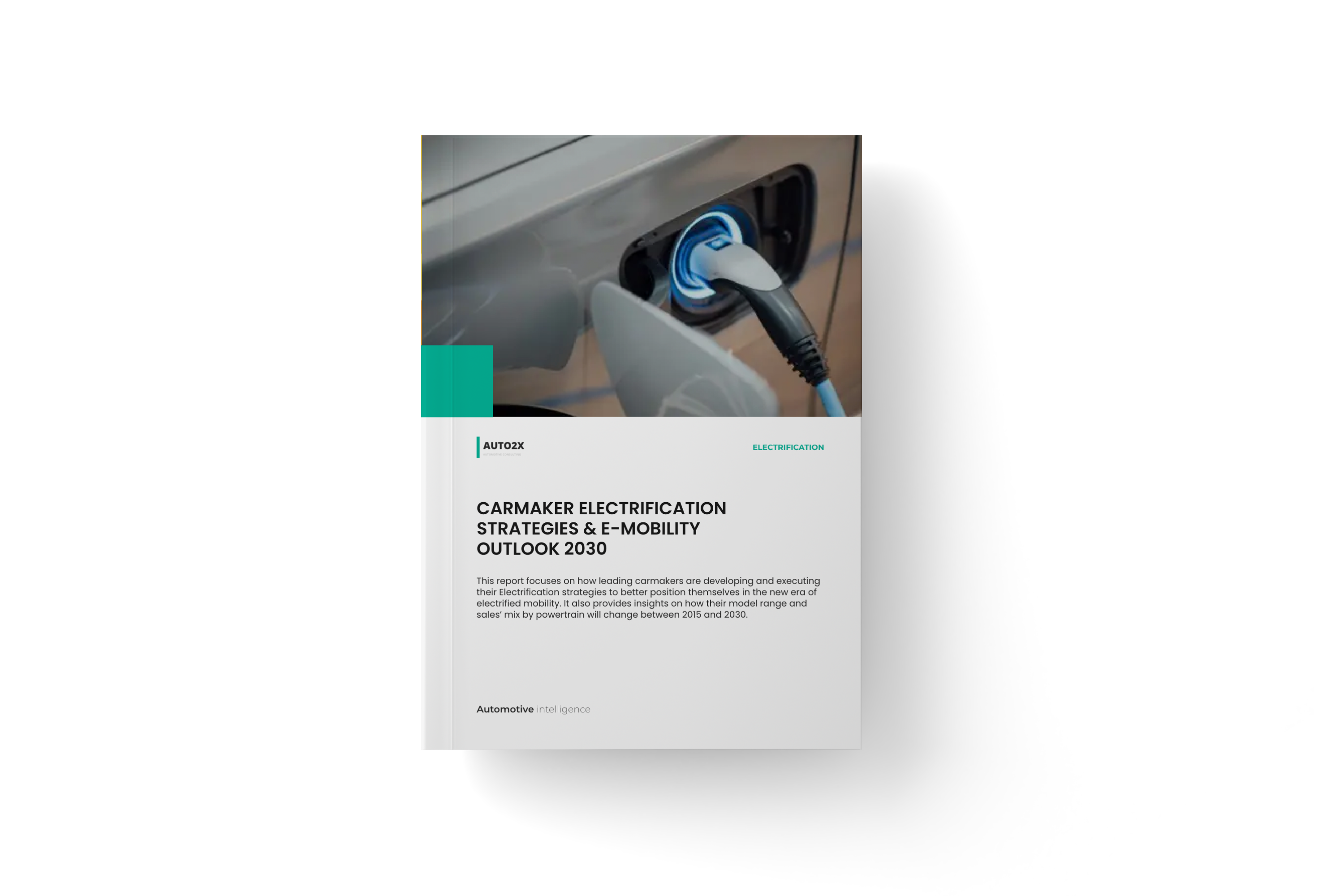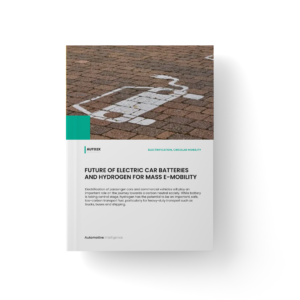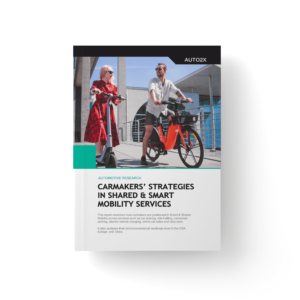Description
This report focuses on how leading carmakers are developing and executing their Electrification strategies to better position themselves in the new era of electrified mobility. It also provides insights on how their model range and sales’ mix by powertrain will change between 2015 and 2030.
We capture the development of their electric / electrified portfolio, incl. BEV (Battery Electric), PHEV (Plug-in hybrid), HEV (Hybrid), Fuel Cell, as well as the electric architectures.
| Acura | Chery | Hyundai | Mazda | Seat |
| Alfa Romeo | Citroen | Infiniti | Mercedes-Benz | Smart |
| Audi | Dongfeng | Jaguar | Mini | Skoda |
| BAIC | FAW | Jeep | NIO | Subaru |
| Bentley | Ford | Kia | Nissan | Tesla |
| BMW | GAC | Land Rover | Peugeot | Toyota |
| BYD | Geely | Lexus | Porsche | Volvo |
| Cadillac | Great Wall | Lucid Motor | Renault | VW |
| Changan | Honda | Maserati | SAIC | XPENG |
European Premium carmakers prepare a product offensive in Electrification over the next 7 years announcing aggressive targets for up to one-third of sales coming from EVs
New BEVs coming to market in 2018 from Audi and Jaguar are BEV variants of modified ICE architecture to shorten time-to-market until a dedicated one is ready.
“By 2025 every third Audi will be electrified”, says Audi CEO
BEV dedicated architecture and platform, such as the ones developed by Tesla and BMW (i3), offer advantages being designed from the ground up to take advantage of electrification, such as flat underfloor batteries, lower cowl, more cab-forward, more cabin space and optimised safety measures. On the other hand, BEV dedicated top-hats based on highly-modified ICE architectures, such as Audi’s first-generation e-tron, and Jaguar I-Pace, are quicker to introduce but highly compromised since it is difficult to optimise architecture for ICE and BEV.
However, they offer a pragmatic step, which together with the shift towards petrol/diesel mild hybrids, is an interim electrification strategy. Therefore, Premium carmakers Audi and Mercedes-Benz are following Tesla and BMW in the design of a dedicated architecture, such as the upcoming Mercedes-EQ line-up.
Race to SUVs will continue: electric SUVs to rise
Leading companies to launch at least 28 new SUVs over the next 7 years, of which at least half will be electrified
SUV deliveries accounted for 33.8% of BMW’s 2017 sales and 65.4% of Porsche’s. Companies like Porsche, with the launch of the Cayenne and Macan, and Jaguar with the F-Pace has seen substantial growth with the introduction of their SUV models. Therefore, Premium and Volume carmakers will continue to invest heavily in the SUV segment over the next decade. We expect the SUV trend to continue with the addition of electric SUVs from new start-ups, global players and domestic brands.
Regulation pushing OEMs to accelerate electrification roadmaps: Further CO2 reduction is needed in Europe by 2030
A further 20% reduction in CO2 emissions is required in Europe by 2020 to meet regulations. Low EV (1.8%) & Hybrid (3%) penetration pushes carmakers to ICE electrification as an interim solution.
European Environmental Agency’s recent findings showcase:
- New cars sold in the EU in 2017 emitted on average 118.5 g CO2/km, a slight increase of 0.4 g/km compared to 2016. The difference between the average fuel efficiency of petrol cars (121.6 g CO2/km) and diesel cars (117.9 g CO2/km) is reducing compared to 2016.
- Since 2010, official emissions have decreased by 22 g CO2/km (16%). Further improvements need to be achieved by manufacturers to reach the 2021 target of 95 g CO2/km (Regulation No 443/2009).
Dieselgate and the high cost of electrified architecture drive European carmakers to mHEVs to gain efficiency and performance until EVs are ready for primetime
While European carmakers boast about their plans to electrify their whole line-ups over the next decade, dedicated BEV architectures in most cases are coming by the end of this decade. In the meantime, amid pure diesel’s future is at risk – due to emission scandals (VW Group “Dieselgate”), city bans and removal of tax incentives – they need pragmatic cost-efficient electrification solutions to meet efficiency goal until they develop a dedicated electric architecture.
Table of Contents
-
Executive Summary
- EV product offensive 2018-2030
- Overview of Global Powertrain Outlook up 2030
-
Carmaker Roadmaps to electrification 2030
- Audi
- BAIC Motors
- Bentley
- BMW Group
- BYD
- CHANGAN
- Chery
- Daimler: Mercedes-Benz
- Ford
- Geely
- General Motors: Cadillac and Chevy-Cruise
- Great Wall
- GUANGZHOU AUTOMOBILE GROUP (GAC)
- Honda
- Hyundai, KIA, and Genesis
- Jaguar Land Rover
- Lucid
- NIO
- Porsche
- PSA
- Renault-Nissan-Mitsubishi Alliance
- SAIC
- Stellantis
- FCA: Focus on Alfa Romeo, Fiat, Maserati & Jeep
- PSA
- Subaru
- Tesla Motors
- Toyota Motors: Lexus and Toyota
- Volvo
- VW & VW Group: VW’s strategy & model range by Level of Automated Driving
- XPeng
-
Global Powertrain Outlook 2030
- Global Powertrain Outlook 2025
- Regulation pushing carmakers to accelerate their electrification roadmaps
- Sustainable propulsion as a business proposition
- New business models in electrified mobility
- ICE outlook
- EV market outlook
- China
- Europe
- USA




